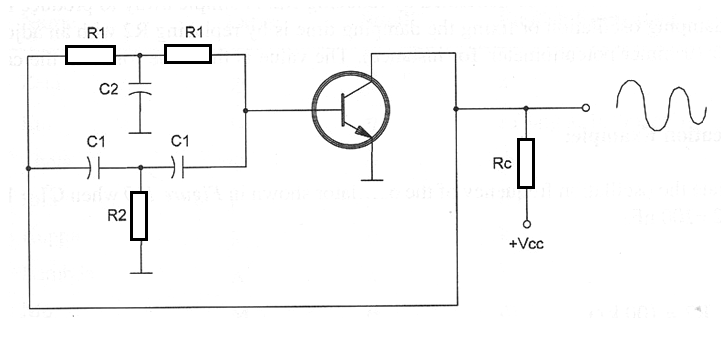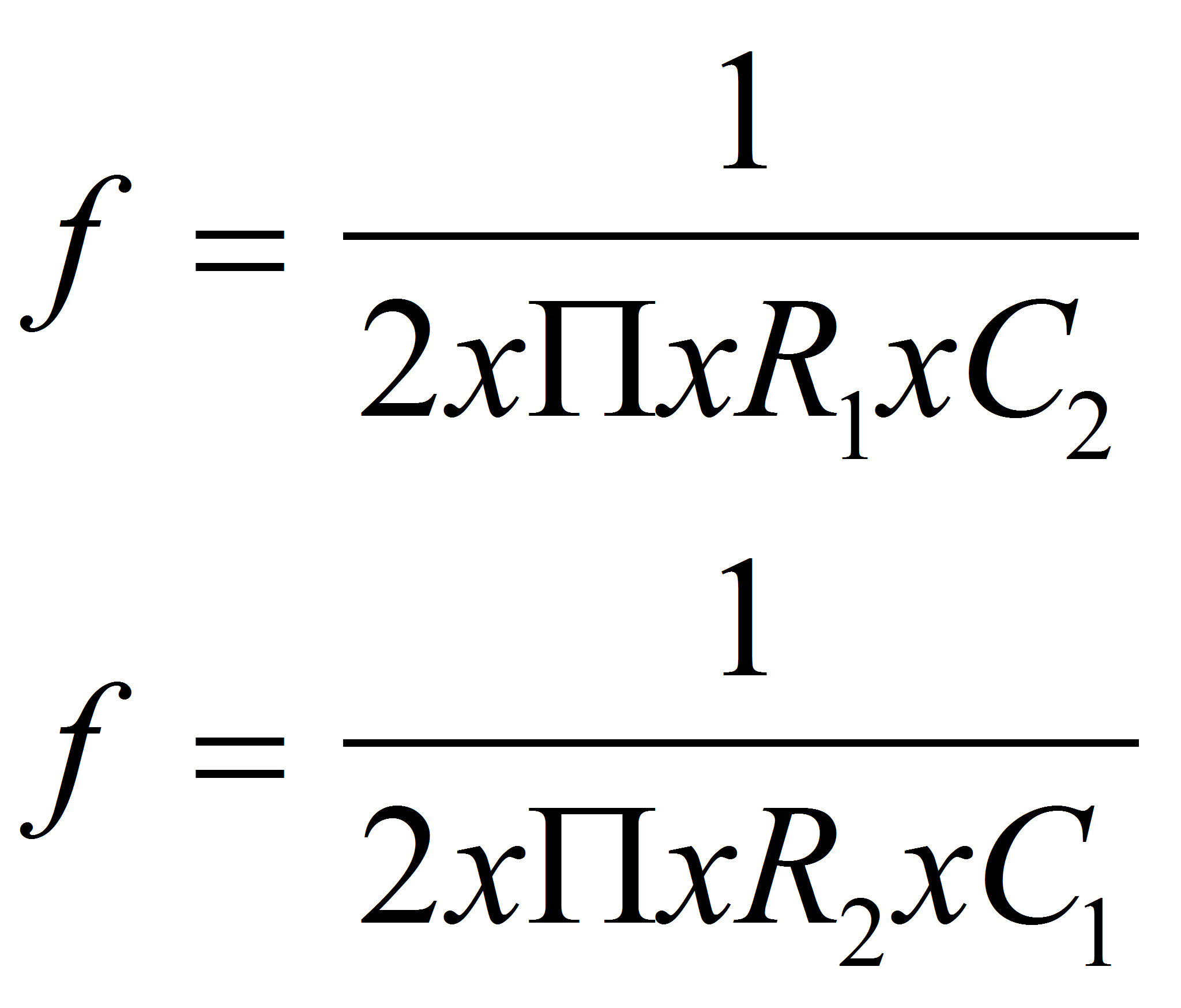The twin-T oscillator is used to produce low frequency sine wave signals and damped oscillations in the audio range. Damped oscillations are specially used to generate percussion sounds in electronic musical instruments.
Figure bellow shows the basic configuration with common values to resistors in a twin-tee oscillator using a NPN general purpose transistor.

Formulas 1
Frequency:

Where:
f is the frequency in hertz (Hz)
Π is the constant 3.1416
R1, R2 are resistances in Ω (Ω)
C1, C2 are the capacitances in farads (F)
Important:
C1, C2 and R1 and R2 must mantain the following ratios of values:
C1 = C2 / 2
R1 = 2 x R2
Damping oscillations can be generated reducing R2. A simple away to produce the desired damping oscillation fixing the damping time is replacing R2 by a adjustable resistor (trimmer potentiometer for instance). The value is the same found in the calculations.
Application example:
Calculate the oscillation frequency of the oscillator given in figure above using for C1 100 nF capacitors and C2 a 200 nF capacitor.
Data:
R2 = 100 kΩ
R1= 50 kΩ
C1 = 100 nF
C2 = 200 nF
f = ?
Using formula 1:
f = 1 / ( 2 x 3.14 x 50 x 103 x 200 x 10-9)
f = 1 / (6.28 x 106 x 10-9)
f = (1 x 103) / 6.28
f = 15.923 Hz




